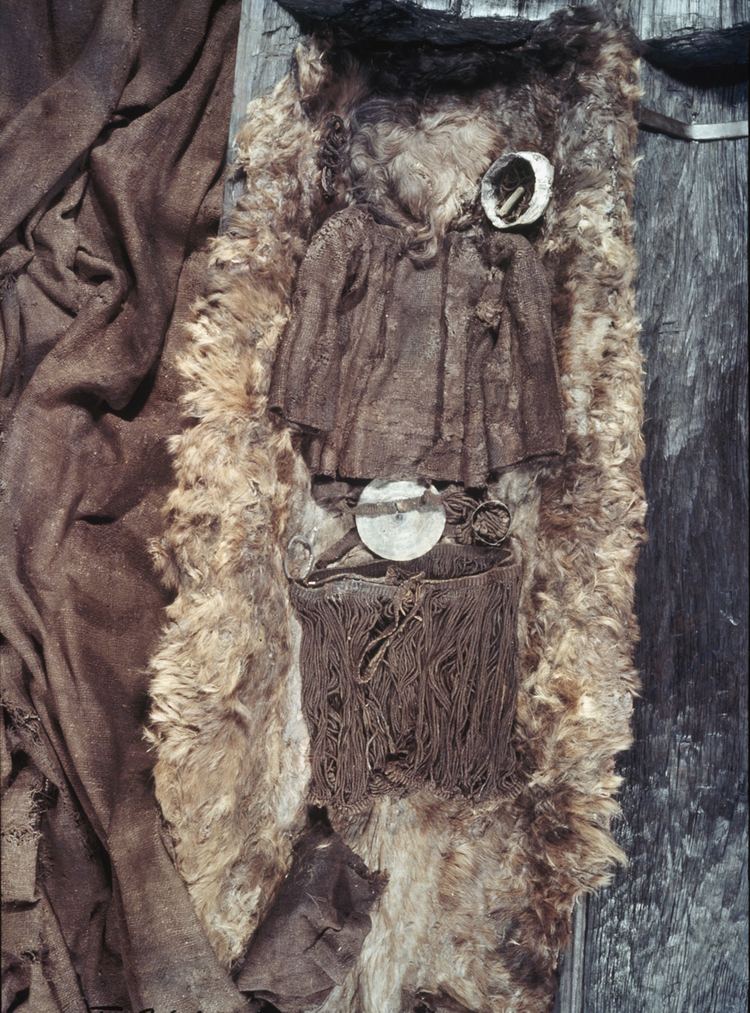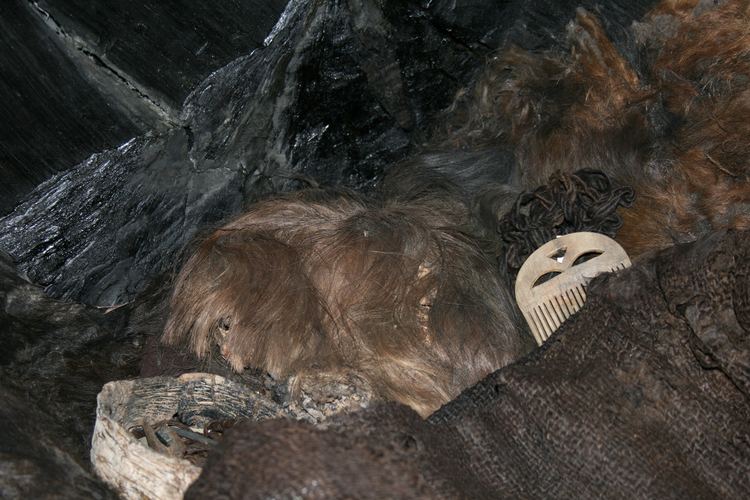 | ||
Similar Grauballe Man, Haraldskær Woman, Elling Woman, Yde Girl | ||
The egtved girl
The Egtved Girl [ˈɛɡtʋɛð] (c. 1390–1370 BC) was a Nordic Bronze Age girl whose well-preserved remains were discovered outside Egtved, Denmark in 1921. Aged 16–18 at death, she was slim, 160 cm tall (about 5 ft 3 in), had short, blond hair and well-trimmed nails. Her burial has been dated by dendrochronology to 1370 BC. She was discovered together with cremated remains of a child in a barrow approximately 30 metres wide and 4 metres high. Only the girl's hair, brain, teeth, nails and a little of her skin remain preserved.
Contents

National museum of denmark the egtved girl
Burial
The barrow was excavated in 1921, and an east-western aligned coffin was found. It was transported in sealed condition to the National Museum of Denmark in Copenhagen, where it was opened and the Egtved Girl discovered.

She was buried fully dressed on a cowhide in the coffin. She wore a loose bodice with sleeves reaching the elbow. She had a bare waist and wore a short string skirt. She had bronze bracelets and a woolen belt with a large disc decorated with spirals and a spike. At her feet were the cremated remains of a child age 5–6. By her head there was a small birch bark box which contained an awl, bronze pins and a hair net.

Before the coffin was closed she was covered with a blanket and a cowhide. Flowering yarrow (indicating a summer burial) and a bucket of beer made of wheat, honey, bog-myrtle and cowberries were placed atop. Her distinctive outfit, which caused a sensation when it was unearthed in the 1920s, is the best preserved example of a style now known to be common in Northern Europe during the Bronze Age. The good preservation of Egtved girl is due to the acidic bog conditions of the soil, which is a common condition of this locale.

Scientists examined chemical isotopes from tissues in her teeth, fingernails, hair and clothing. The concentration of strontium in the earth varies with location. These concentrations are reflected in the local water sources from which humans drink, and retained in human tissues. Utilizing the measured concentrations of strontium-87 and strontium-86, researchers have formulated educated estimates regarding the geographical origins of the girl and her various residences throughout her life. They suggest that the girl originally lived in the Black Forest region, but married and moved to Denmark. She is believed to have traveled back and forth between the two areas and was buried in Denmark after her death.
Reconstruction

The outfit was reconstructed for the National Museum of Denmark by the Lejre Experimental Centre and is on display there. A reconstructed set of clothes, as well as details of the excavation, are on display in the Egtved Girl's museum at the excavation site.
